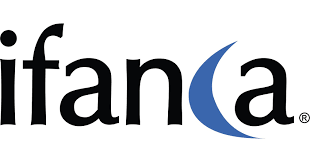
World Food Day: Global food insecurity and opportunities in Islamic economies
The number of people undernourished around the world, a key indicator of global food insecurity, is down 167 million over the last decade to 795 million, according to the latest 2015 data by the Food & Agriculture Organization of the UN. However, this is still an unacceptably high number and Islamic countries remain a major part of the food insecurity equation.
Over 30 percent of these malnutritioned people are from the OIC (Organization of Islamic Cooperation) member countries. In addition, 21 OIC member countries have a cereal import dependency ration of over 50 percent -- another key indicator of food insecurity.
Ironically, while OIC countries such as Bangladesh, Egypt, Indonesia, Pakistan and Sudan are among the worst facing this food crisis, these same economies are some of the most agriculturally endowed in the world.
Low productivity in their food and agriculture production presents key investment opportunities in these markets – especially for the highly food dependent OIC economies.
As highlighted by the latest FAO report, enhancing the productivity and incomes of smallholder family farmers is key to progress.
A confluence of Islamic financing and halal food value chain affinity further strengthens the case for complimentary intra-OIC investments proposition.
|
YOUR NEEDS ADDRESSED |
ASK YOURSELF |
|
|
Scenario: You are an Executive at an OIC-based food & agriculture manufacturing company and are seeking organic growth in your core markets |
Does food insecurity present a real investment and growth opportunity? |
How do you identify new growth opportunity areas? |
|
How do food insecurity issues worldwide create investment opportunities in the neighborhood/ region? |
||
|
What and where are these opportunities? |
||
SIZEABLE FOOD INSECURITY REMAINS FOR OIC ECONOMIES
It is important to highlight that food security is a complex phenomenon with multiple causes.
The State of Food Insecurity in the World by FAO in 2013 introduced a suite of food security indicators, which measure four distinct dimensions of food around: availability, access, stability and utilization.
DinarStandard had identified 14 distinct drivers of food security, grouped by demand side drivers, supply side drivers, market barriers and social drivers. However, the net impact is food shortage/price fluctuations and food malnutrition which are the key socio-economic concerns.
While much progress is being made, as highlighted by the FAO, still a very high and unacceptable number of an estimated 795 million people in the world lack food for a healthy life.
A growing global population, estimated to reach 9 billion in 20 years from the current 7.3 billion (U.N. estimates), will indeed continue to add onto this pressure.
OIC (Islamic) economies are among the worst facing this crisis. Seven of the top 15 countries with most numbers of undernourished population are from the OIC member countries. Meanwhile, a high number of OIC economies are highly dependent on food imports. This includes high per-capita income economies of the GCC.
 Source: FAO, 2014-16 estimates |
 Source: FAO, 2009-11 (Qatar, Bahrain data not available) |
INVESTMENT OPPORTUNITY AREAS
Within the OIC there are essentially four categories of countries exposed to food insecurity in different ways.
Those suffering the most are facing high malnutrition and are also net food importers (e.g. Somalia, Tajikistan, Yemen).
Then there are those with high malnutrition but are also agriculturally endowed countries (e.g. Pakistan, Sudan.)
The third category is of high-income OIC nations who are major importers of food and exposed to global food supply fluctuations (e.g. UAE, Saudi Arabia.)
The final category is of those OIC countries who are major exporters of food while maintaining a healthy nutrition rate (e.g. Turkey, Malaysia.) and are relatively the most secure.
| FOUR CATEGORIES OF FOOD INSECURE OIC COUNTRIES |
 |
| Source: DinarStandard analysis |
Based on our earlier description of the four categories of OIC countries and the nature of their resources, food supplies and demands, we see complementary opportunities among these markets.
An OIC Food & Agriculture Industry Clusters Model, developed by DinarStandard, maps the full value-chain of 23 food and agriculture sub-sectors across OIC economies with major suppliers and consumers to identify unique investment and growth opportunities.
Value creation from amongst these OIC-wide food and agriculture related industry clusters is derived from finding inefficiencies, product/services gaps and sustainable productivity needs, within different parts of the related industry value chain.
Islamic financing becomes another common denominator for opportunities across OIC economies.
Supporting the premise of OIC-wide food and agriculture cluster potential is its local, vibrant private sector driven business activity. Many sophisticated, regionally and even globally competitive multi-billion dollars-worth companies exist within the OIC such as Ulker (Turkey), Savola Group (Saudi Arabia), Felda Holding (Malaysia), Sime Darby (Malaysia) Americana Group (Kuwait), IFFCO (UAE) and many others.
Specific areas of growth proposition themes are as follows:
- Investment opportunities: M&A, technology investment, and Joint Venture opportunities are primary areas. Target company capabilities can be strengthened through investments in productivity, marketing and research.
- Halal value chain alliances: The fast growing halal food market is seeking ‘farm to fork’ halal process verifications and improvements. This sub-clusters value chain would be evaluated to identify relevant halal certified partners to improve efficiencies and competitiveness.
- New growth markets: Finally, for the select sub-sectors OIC Industry Clusters, net import OIC markets would be evaluated for growth opportunities where companies can expand into. This reflects the strong desire by the OIC bodies such as Islamic Development Bank Group to increase Intra-OIC trade with various favorable and supporting multi-lateral trade agreements.
| RECOMMENDED ROADMAP |
| Identify investable food insecure OIC markets that are most relevant to you: Determine markets both in terms of your business contacts/comfort and strong food and agriculture sector of a food insecure market. |
| Identify which sectors are most opportune for you and develop a differentiated value proposition (relating to halal integrity or Islamic financing or business efficiency/know-how) of investing in that market and or seeking JV opportunities. |
| Evaluate business growth opportunities in net import markets with food insecurity identifying unique differentiated propositions. |
© Copyright SalaamGateway.com 2015

Rafi-uddin Shikoh, Managing Director, DinarStandard